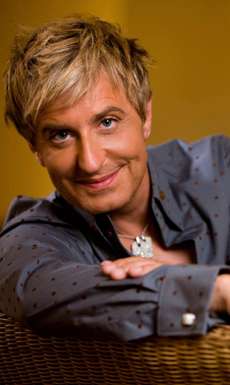|
Back
Hidden Voices, Secret Galleries New York
Alice Tully Hall, Lincoln Center
11/10/2012 -
Claude Debussy: Préludes, Book 2 – Suite bergamasque – Estampes – L’Isle joyeuse
Jean-Yves Thibaudet (Pianist) 
J.-Y. Thibaudet (© Decca/James Cheadle)
Any virtuoso pianist can program a single piece by Claude Debussy. But only the most audacious–or delusional–artist would dare to have a whole evening devoted to Debussy. Outside of the misconception that such a program would consist of music clusters glazed over by incessant pedaling, an audience still longs for variation, diversity, perhaps even relief.
This, however, does not take into account Jean-Yves Thibaudet. He may be audacious (what artist isn’t?), but after three decades, 40 albums and an ardent international audience, he is hardly delusional. His last New York performance, he a Ravel so elegant, so subtle that it literally seduced us to want more and more.
The full house at Alice Tully Hall last night must have known his reputation, for they would not be dissuaded to hear almost two hours of Debussy. But Mr. Thibaudet’s Debussy was not Ravel. Instead of subtle elegant tones, the Frenchman created Debussy the Painter. Instead of the Impressionist’s “impressions”, Mr. Thibaudet flew us to medieval Spain and Charles Dickens’ London. He turned the patter of garden rain into a soaring orchestral tone-poem, and gave Berber-Arab aurae to the music of Grenada.
Debussy’s three “engravings” (Estampes) were not black-and-white prints, but dream-like fantasies. His Préludes were tiny tone-poems. Mr. Thibaudet was subtle when necessary, but one knew that he wanted to bring the more extrovert pictures to radiant life.
In essence, Mr. Thibaudet, preserving the style of Debussy, guided us through a picture gallery, each room bursting with the most intense colors.
This was evident from the very first 32nd note quintuplets of Brouillards, executed with such a temperate touch that they served as not only as mist but as mystic background to all kinds of melodic creatures peeking through the phrases. The mystery continued in the “Dead Leaves”. But he took a break in the first of two “Grenada” pieces, La Puerta del Vino. Mr. Thibaudet is a master of the ineffable, He didn’t need to stamp out the habernara/Moorish colors. In my score, Debussy calls for the motion of the habernara, not the rhythms.
Mr. Thibaudet is endowed with a technique so exquisite, almost so sweet, that t he could bring us colors as well, through “General Lavine” to the Pickwick to those glorious fireworks and the gentle Marseilles. (Pardon my American bias, but Charles Ives’ Central Park in the Dark offers that same subtle treatment.)
I had reckoned that, after the intermission, the Suite Bergermasque would have brought a medieval tone, but the Préludes had already harked back to memories of the past. How Thibaudet does it, how he transforms notes into hidden memories, should be his own secret.The Suite is the home of Clair de Lune, whose popularity may be partly due to its relative ease for younger pianists. When Mr. Thibaudet played it, the work was sensuous, delicate, sometimes close to voluptuous. Ravishing.
The Estampes went from the Orient to Grenada again, and the rainy gardens, with the play of tonal lights and a full orchestral storm.
At its brightest was the final L’isle Joyeuse. It was light, it danced, each moment was glittering. Unlike the Préludes, the ‘happy isle” had no secrets, no nuances, no darkness in this playing.
(Later, I wondered whether scuba-divers on the “happy isles” collected shards from the nearby La Cathédrale engloutie.).
After this kind of recital, I wanted no encore, I wanted to go into New York and gaze at the shadows, the crevices. Not seeing our buildings as architecture, but perhaps as Debussy would, as sculptures. He did offer a Brahms Intermezzo, which broke the spell. Where Debussy offered the shades and secrets of French painters, Brahms said, “Okay, here’s the piece, Pretty damned beautiful, huh?”
Far more in the style was Earl Wild’s arrangement of Gershwin Like the Debussy, it was part painting, part music, all poetry.
CODA: Steven Spielberg’s newest film, Lincoln has a stunning script (part fantasy, part real), faultless acting and and the expected Spielberg production values. A surprise was John Williams’ music, for oncenot the usual Williams ultra-spectacular Superman/Jaws extravaganza. This music was understated, in the background, never intrusive.
And who performed it? Mr. Williams surrendered his own baton to a master. Riccardo Muti conducted the Chicago Symphony here. A faultless choice.
ConcertoNet is on Facebook
Twitter: @concertonet
Harry Rolnick
|